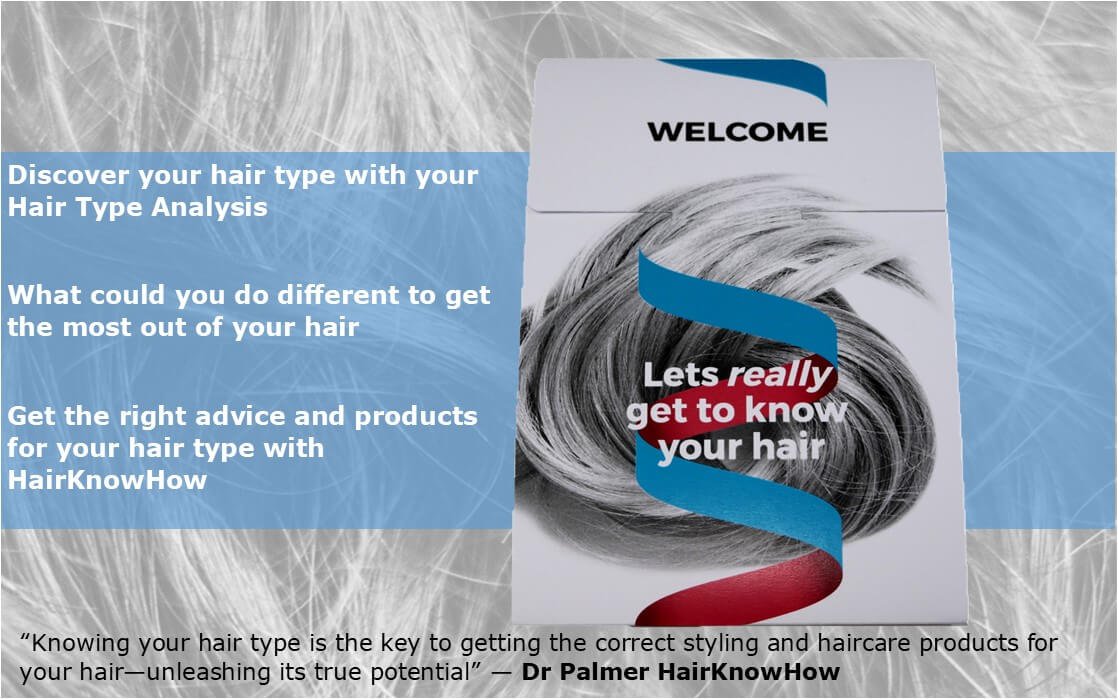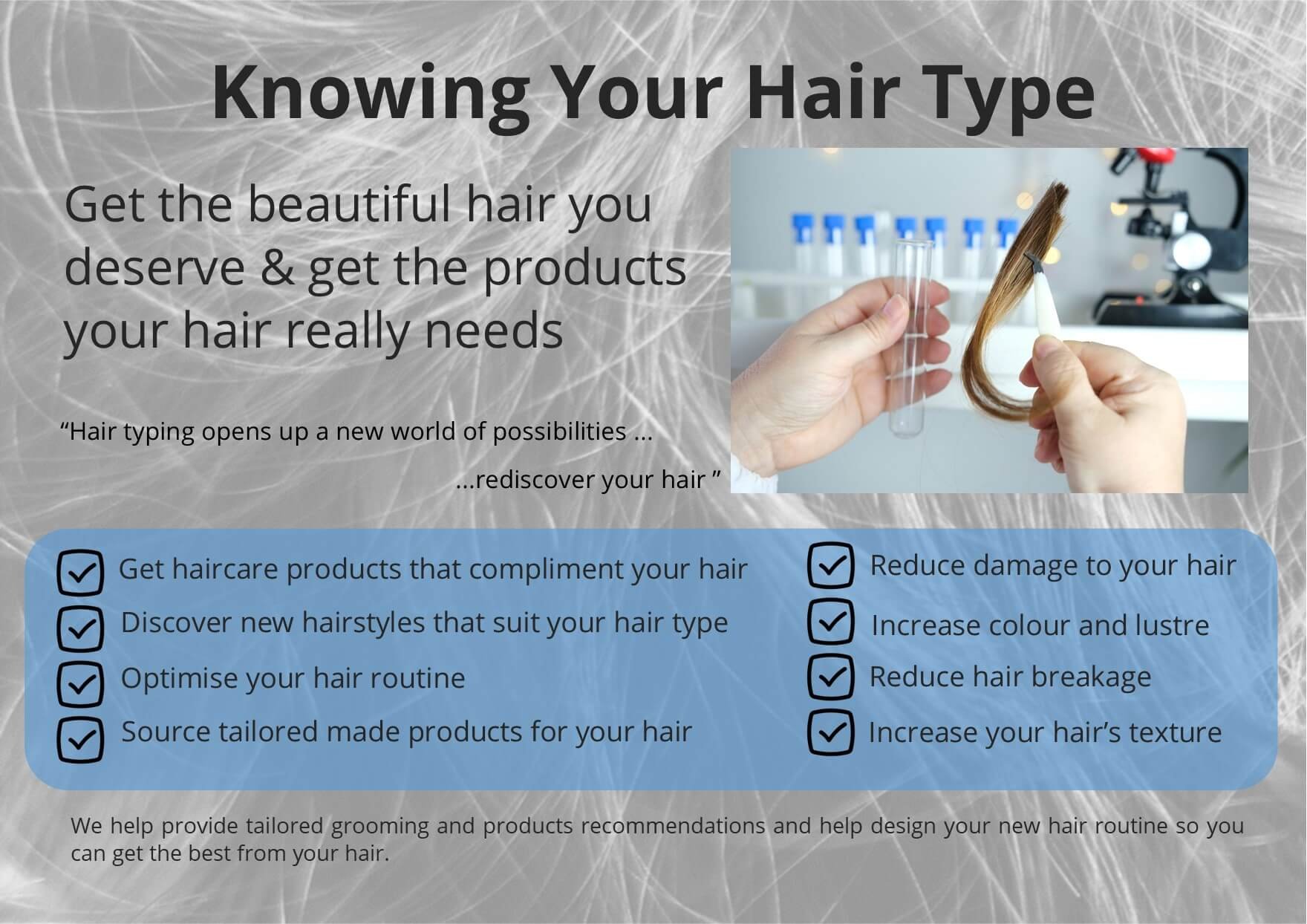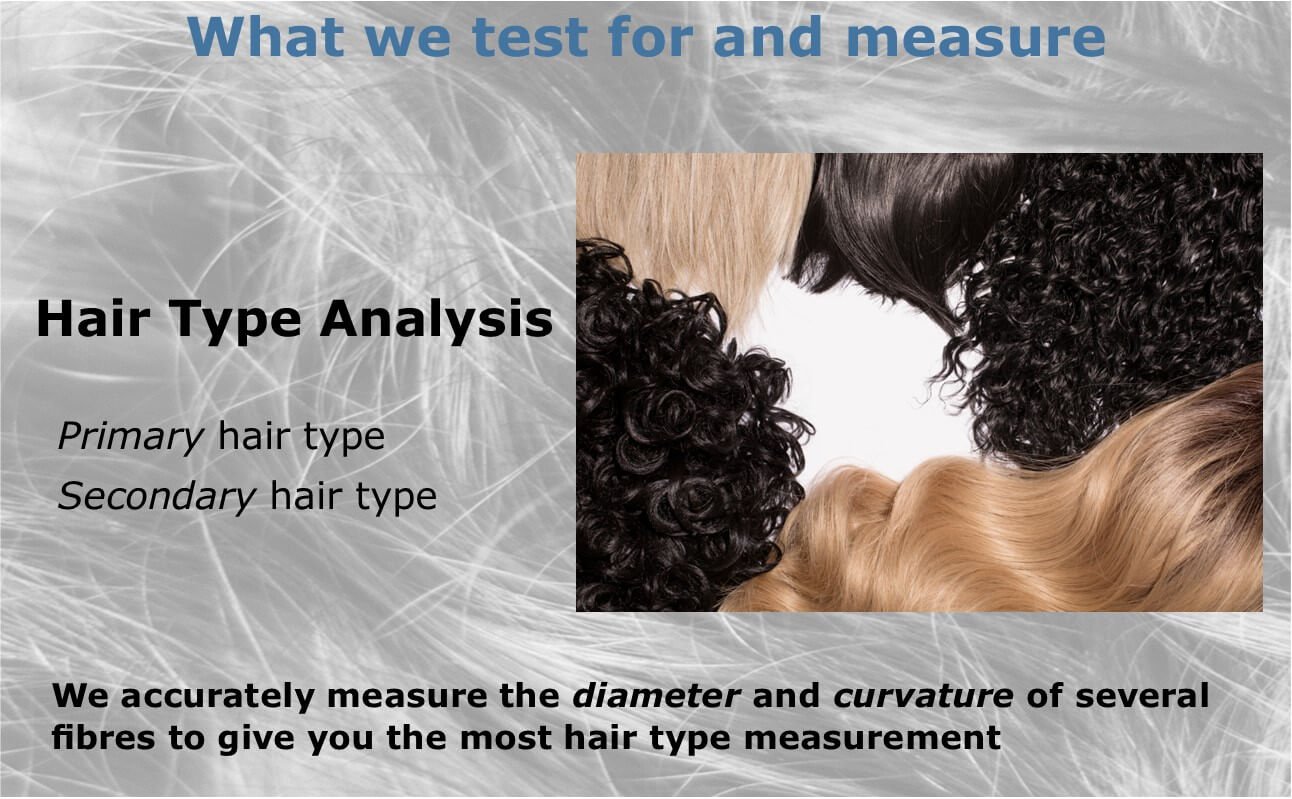The Hair Type Analysis
Discover your hair type and take control of your hair
Shampoo adverts all offer the same thing: glossy, gorgeous, healthy-looking hair - and we all want it. There can be a world of difference between ads and reality, but we’ve got the secret ingredient that can turn your tresses from a mess into a masterpiece.
Our Hair Type Analysis will reveal your true hair type, unlocking its natural beauty and allowing you to take control of your hair. No more guesswork, wondering which products to buy to make it healthy and shiny.
There’s nothing quite like that ‘just stepped out of the salon’ feeling when your hair looks and feels fantastic. It gives you a lift like nothing else. Many products claim to pull this off, but how can you be sure you’re buying the right products for your hair type?
Likewise, when you visit the hairdresser, even if you’ve got a particular cut or look in mind (remember when we all went crazy for Jennifer Aniston’s ‘Rachel’ do?), there’s no guarantee it’s going to suit your hair type, or you will look your best until the final snip.
What if you could go into a beauty salon knowing exactly which products were perfect for your hair type and which hairstyle would suit you the best?
We can give you that information!
Our Hair Type Analysis - Silver offers science-based information about your hair type and how you can stop damaging it and keep it in healthy, shiny condition.
It features a complete hair type determination using the Andre Walker system, including:
Your average hair diameter and variance across your hair sample
Your curl pattern
Expert hair care recommendations for your hair type by Dr J Palmer
Plus, if you upgrade to the Plus Hair Type Analysis Service, there’s an optional high-resolution/high-magnification image of your hair.
Want to know your hair type before you buy that designer shampoo, or get the lowdown on the perfect style and care routine for your crowning glory in less than five minutes? Send us a sample today!
Healthy hair is beautiful hair.
Shipping
We ship worldwide, including the US and UK. You should receive your kit within 3-5 working days, depending on your location.
What is your hair type? How does hair typing work? Is it essential to know, or is it all just hype? Read on to find out!
No two heads of hair are the same - they are as unique and beautiful as fingerprints. However, we can narrow them down to different hair types, and we have Andre Walker, the famous hairstylist who worked with Oprah Winfrey, to thank. He created the industry’s most-used hair typing system.
It considers two of the main structural attributes of human hair, the curl pattern or degree of curl and the thickness or diameter of the fibres.
Knowing your hair type is essential, whether you have fine and naturally straight hair, a coarse, tight afro hair or tresses that are somewhere in between. You can have more than one hair type across your scalp: hair closer to your neck will typically be curlier than the hair on your crown, for example.
That said, you will naturally have a dominant, more abundant hair type, and this is the one you need to know. Understanding your hair type gives you the ideal starting point to discover hairstyles, haircare and styling products better suited to your natural hair.
What determines your hair’s curl, thickness and ultimately your hair type? Your follicle is the root of it all!
Each hair type has advantages and drawbacks, but whether you have rod straight or densely coiled hair, we think they’re all beautiful.
Remember that your hair is a natural product made within your skin using structures called hair follicles in repeated cycles called the hair follicle cycle. The hair follicle is the only hair structure considered alive.
The size, shape and overall geometry of the follicle give rise to the resultant hair fibre’s thickness and how flat or round the fibre is relative to a perfect circle if you were to cut the fibre in half, also known as ellipticity. The flatter or more oval the hair shaft, the greater its ellipticity.
It is principally these two physical attributes, thickness and ellipticity, of each hair fibre that determine your natural Andre Walker hair type.
The more circular your hair fibres, the naturally straighter your hair will be. As a rule of thumb, the straighter your hair, the easier it is to brush, and the less damage you will do to your hair when brushing.
Curly hair can be more prone to breakage but will often possess much greater volume. Curly hair is also more prone to frizz and can require more specialised hair care products and sleeping aids, such as detangling or conditioning treatments or silk bonnets. There is a lot to think about!
The thickness of each fibre will also affect its curl, which is especially notable the longer your hair is. This difference in curl occurs because thicker fibres are stronger and can resist being weighed down by longer (higher mass) hair – this is more important the closer you get to the root.
For example, long, coarse, curly hair will hold its natural curls from root to tip, whereas a finer (thinner) fibre with the same curl and length would be much flatter closer to the root.
Ultimately your hair thickness affects its ability to maintain its natural curl at different fibre lengths. Similarly, and for the same reason, the thickness of your hair fibres affects the types of hair products you use on your hair.
Those with fine (low diameter) hair should avoid heavier styling products, hair oils, butters, shampoos and conditioners that may result in a very flat, limp look. However, such products could be used by people with medium hair or coarse hair. A clarifying shampoo may be needed to remove all that build-up from the fine hair and help it to return to its natural texture.
As you’d expect, those with medium to coarse hair will need a stronger-acting styling product to overpower their hair’s natural curl and elasticity to achieve your desired hairstyle.
The good news is thicker and coarser hair is generally more resistant to damage when it comes to pulling and tugging. This increased damage resistance is especially true if your hair fibres are naturally straight. Still, this rigidity, combined with an intense curl, can make your hair prone to breaking, especially when dealing with tangles.
The thickness of your hair can also determine the natural hydration of hair either, resulting in increased greasiness or dry hair. There’s more to ensuring your hair stays hydrated than giving it a good condition when you wash your hair.
So is hair typing all hype? Absolutely not!
Knowing your hair type is essential in getting the right hair care, styling products and protective styles for your hair. It will help you to get the best out of natural hair care and products, avoid thinning and achieve excellent hair health.
Unlocking the Andre Walker hair typing system
The Andre Walker hair typing system uses combinations of letters and numbers, for example, 2B or 4C. The numbers range from 1-4. 1 is straight hair. 2 is wavy hair, 3 is curly hair, and 4 is coily hair.
The letters refer to the thickness or diameter of your hair fibres: A is fine hair. B is medium hair. C is coarse hair.
A little about HairKnowHow, where we believe healthy hair is beautiful hair.
Our world-leading laboratory tests measure many of your hair’s critical health, physical and optical parameters to give you a comprehensive hair analysis.
Here at HairKnowHow, we are applying our decades of scientific-analytical research in the relatively new field of hair research, part of the growing personal care industry.
The degree of hair testing will depend on which of our three services you choose: The Hair Type Analysis Silver - in which we accurately measure your hair type - our High-Tech Porosity Analysis or The Complete Hair Analysis Gold, where we comprehensively analyse your hair’s core health and beauty metrics. All of our analysis services will advise how you can get the best from your hair.
Both hair tests are non-invasive and only need hairs that have been naturally shed from your scalp and collected during showering, brushing, or retaining a few cut hairs from your last visit to the hairdresser.
Important things to consider for your hair analysis
To determine your natural hair texture (the degree of curl or wave), your hair must be in its natural, relaxed and unaltered state. Thus, you should not have used chemical relaxers within the past three months.
Pro tip: If your hair roots are significantly wavier or curlier than the ends of your hair, then your hair could be showing signs of damage (to clarify, the less curly ends of your hair are the section most likely to be damaged). This could affect the accuracy of identifying your natural hair type.
If you think this applies to your hair, we would recommend you send us a sample from your roots up to - but not including - the part of hair showing damage.
Alternatively, send us your hair as it is, and we will do our very best to get you an accurate hair type determination.
We send out our testing kits using beautiful, locally designed envelopes protected by the latest biodegradable and compostable covering. They usually reach you two to three days after placing your order.
Once you’ve taken your hair sample and have put it in the hair test kit, post it back to HairKnowHow using the self-addressed envelope, and our scientific hair practitioners will get to work evaluating your hair sample.
HairKnowHow hair tests can suit all types of hair and hair textures, whether you have coarse, medium or fine hair, no matter how much hair damage you think you have.
Our tests directly assess the hair shaft using advanced microscopy imaging and spectrographic analysis, while our biochemical assays detect the degree of oxidative stress.
Our hair tests can also identify and diagnose damage caused by day-to-day haircare practices that can build up over time, from processes such as bleaching and aggressive combing or brushing to pulling or wetting damage. These sources of hair damage can result in frizz and hair breakage that increases split ends making your hair look dull and lacklustre.
Many at-home DIY hair test kits, such as the floating strand porosity test, can be hampered by contamination, including natural oils from the follicle. They can make it hard to secure an accurate, reliable and reproducible result for your hair type.
We interpret, quantify and report our scientific observations of your hair’s cuticle and cortex, including past and current health and damage indicators, and reveal your hair type using the world-famous Andre Walker typing system.
We will also offer impartial advice on natural hair products that enhance your hair health and make it more manageable. Everything is sent directly to your chosen email address.
We believe our scientific hair analysis can help you make positive and measurable improvements to your hair health and identify the best haircare products for you.
So, rather than reaching for an expensive hair repair treatment, maybe it’s time to get a scientific insight into the health of your hair?
Take care of yourselves - and your hair.
Dr J Palmer and The HairKnowHow Team






